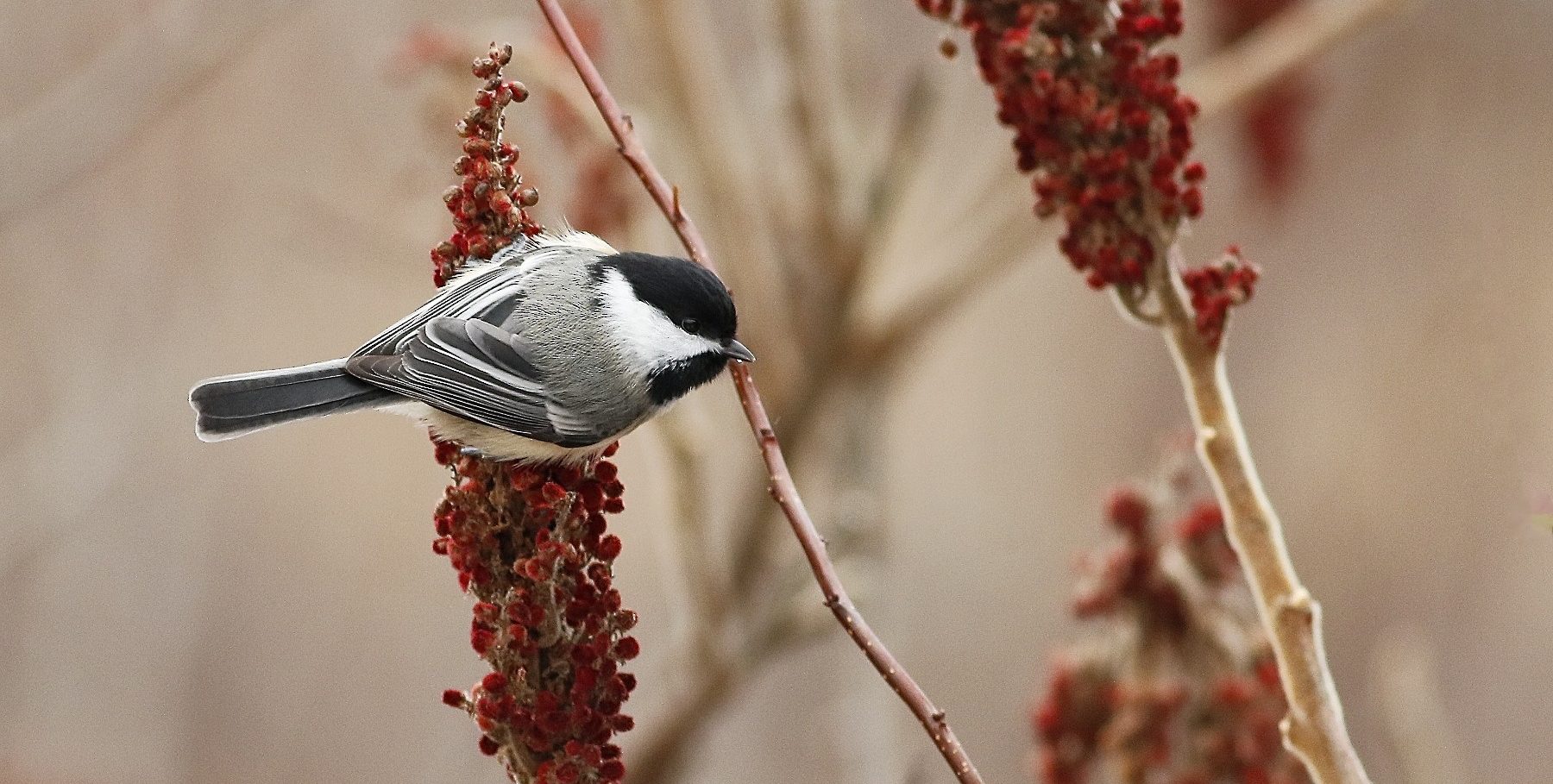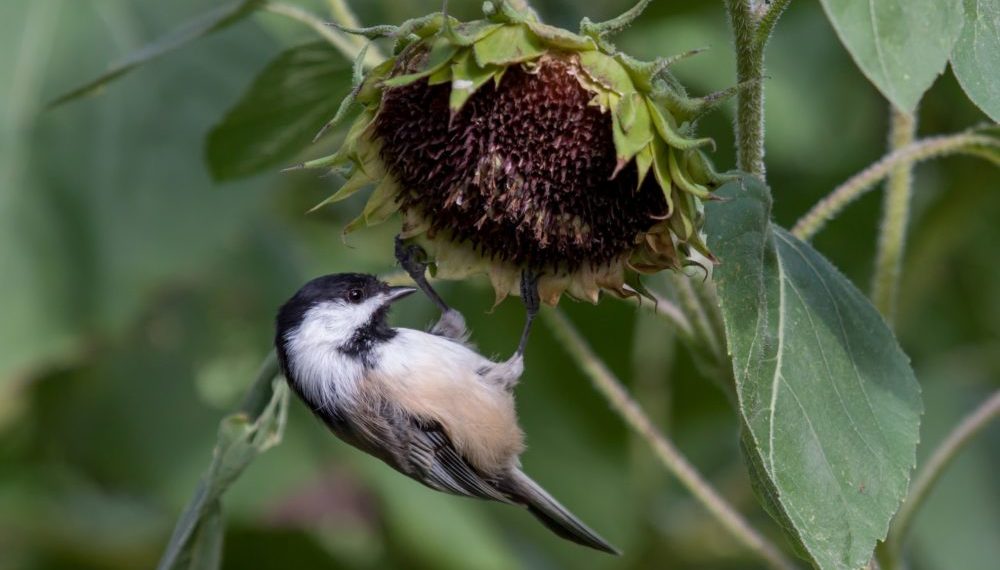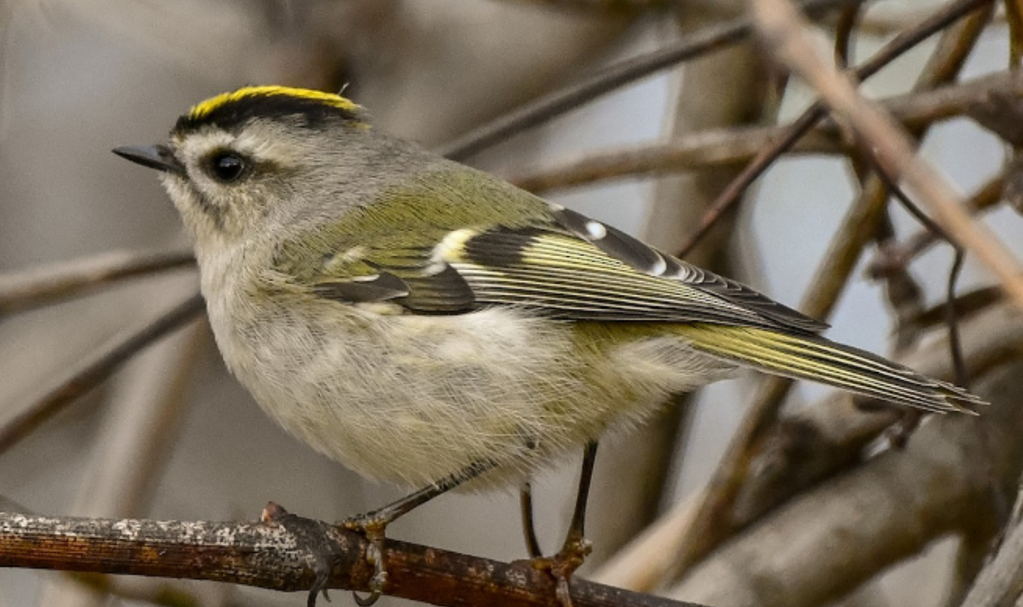How Do Song Birds Survive Winter?

Black-Capped Chickadee ©phil odum/Macaulay Library at the Cornell Lab, Jan. 15, 2019 ML135275421
When autumn arrives in New York, we see and hear flocks of honking Canada Geese flying south in classic V-formation. While Canada Geese can migrate several thousand miles, this pales in comparison to other birds. Arctic Terns fly nearly 25,000 miles to their wintering grounds.
However, not all species migrate. Many are year-round residents, toughing out the cold. These birds have developed very clever survival techniques to solve two enormous problems: staying warm and finding food.
Black Capped Chickadees
You may notice Black-capped Chickadees frequenting your bird feeders during the fall. You might assume that they just have huge appetites. Actually, they hide much of the seed they collect in tree bark or even between your house’s wooden siding. Thus, the chickadee has a stash of seed all winter.

Black-Capped Chickadee ©Kent McFarland/Macaulay Library at the Cornell Lab, Sep. 3, 2012 ML51925391
How does this minuscule bird (about 10 grams) remember where exactly it hid every seed? Chickadees can actually grow and shrink their brains! In autumn, the birds need a strong memory mechanism for re-locating their secret caches. So, the hippocampus regions of their brain add more neurons, increasing volume by about 30%. As winter fades, temperatures rise, and food is more abundant, the chickadee’s brains shrink down again.
In terms of saving energy, Black-capped Chickadees use a technique called “regulated hypothermia” to lower their body temperature by up to 22°F. They particularly reduce the temperature in their feet close to freezing! Thus, they don’t lose core heat warming their extremities. They circulate “fresh” arterial blood next to the cold veins of their feet, recapturing some radiating heat that would otherwise have been lost. During bleak nights, chickadees shelter in tree cavities and puff up their feathers to create a cozy, insulated coat.
Golden-Crowned Kinglet

Golden-crowned Kinglet ©Bob Reiter/Macaulay Library at the Cornell Lab, December 5, 2019 ML191538311
The Golden-crowned Kinglet also braves the bitter winters of the Northeast. Unlike the Black-capped Chickadee, kinglets will likely not visit your seed-feeder because they prefer insects. However, when was the last time you saw a bug flying through a January snowstorm? These tiny birds (even smaller than chickadees) root for insects and their eggs under bark and around conifer trees.
Like the chickadee, kinglets are able to reduce their body temperatures in regulated hypothermia. Since kinglets are not cavity nesters, they don’t have any shelter from the chilly night air. Not to worry, they create their own shelter by huddling in groups, sharing and conserving heat.
When winter rolls around, remember that you are not alone in the cold. Lend these chilly birds a helping hand by keeping your feeder stocked and your bird bath thawed. Consider leaving winterized nest boxes out as shelters. If you have a christmas tree, you can leave it in your yard as a shelter for smaller birds. Planting evergreen shrubs, especially berry-producers like rocky mountain juniper and eastern red cedar helps wintering birds.
Now, think like a chickadee or kinglet: eat lots of snacks, puff up in jackets, huddle with your friends and family for warmth, or just sleep a little colder at night.
More Reading:
How Do Birds Survive The Winter?
How Birds Survive Cold Temperatures
Going Further:
Monitoring and feed winter birds through Project FeederWatch.
Provide winder shelter for birds by creating a brush pile or winterizing your birdhouse.